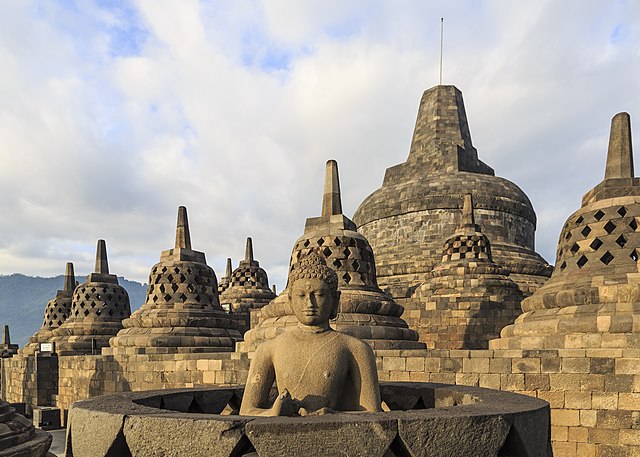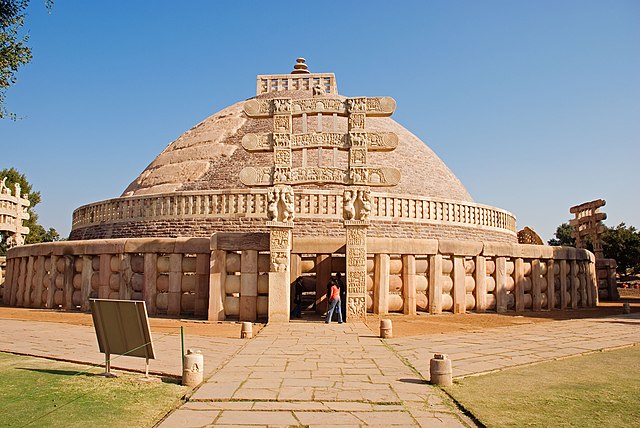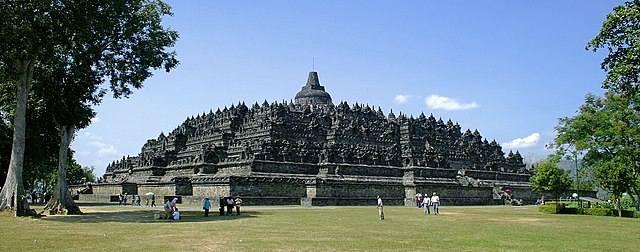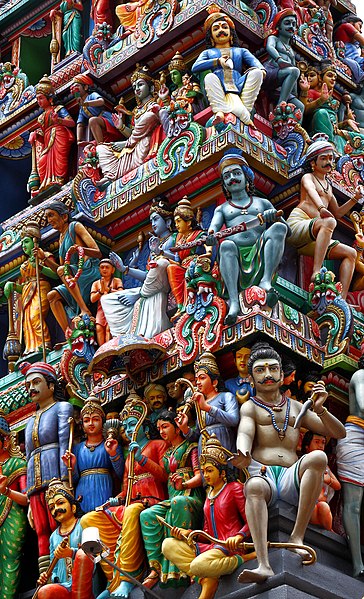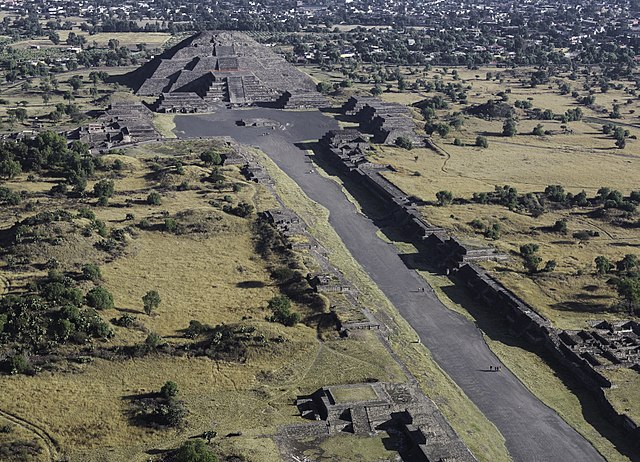Buddhist religious architecture developed in the Indian subcontinent. Three types of structures are associated with the religious architecture of early Buddhism: monasteries (viharas), places to venerate relics (stupas), and shrines or prayer halls, which later came to be called temples in some places.
Buddha statue in Borobudur (Indonesia), the world's largest Buddhist temple.
The Great Stupa in Sanchi
Miniature temple, created 1114 AD, Song dynasty
Borobudur, 9th-century Mahayana Buddhist temple in Magelang Regency, in Central Java, Indonesia. It is decorated with 2,672 relief panels and 504 Buddha statues.
Sacral architecture is a religious architectural practice concerned with the design and construction of places of worship or sacred or intentional space, such as churches, mosques, stupas, synagogues, and temples. Many cultures devoted considerable resources to their sacred architecture and places of worship. Religious and sacred spaces are amongst the most impressive and permanent monolithic buildings created by humanity. Conversely, sacred architecture as a locale for meta-intimacy may also be non-monolithic, ephemeral and intensely private, personal and non-public.
Ornate details on the entrance tower of Sri Mariamman Hindu Temple, Singapore.
Interior of the Sultan Ahmed Mosque in Istanbul, Turkey
Bimah of Princes Road Synagogue in Liverpool, England
Teotihuacán's Pyramid of the Moon was used for ritual sacrifice

